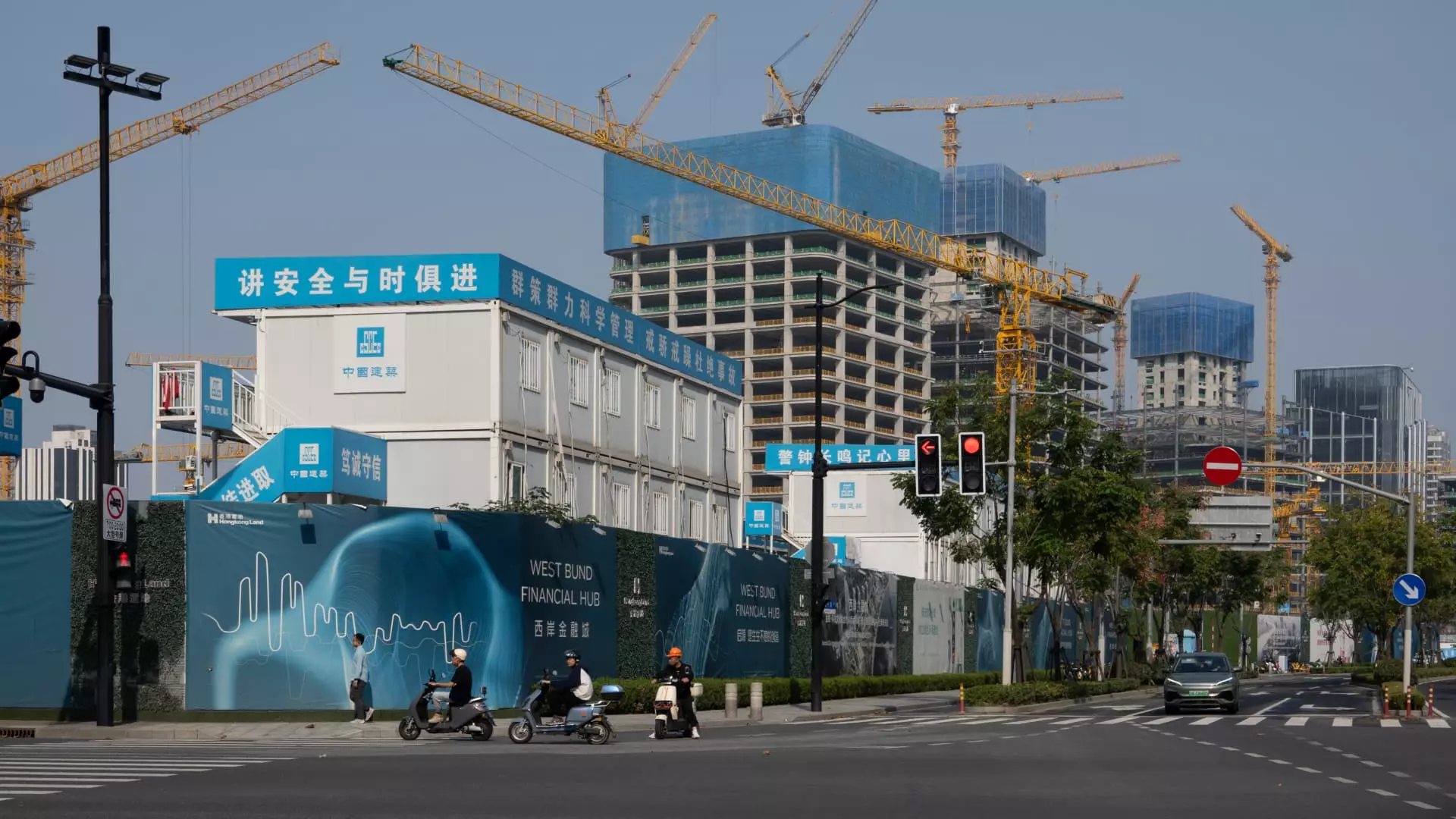In the latest economic reports, China displayed signs of recovery with an eye-catching 4.8% year-on-year growth in retail sales for October. This figure surpassed the 3.8% forecasted by analysts, marking an improvement from the 3.2% growth rate observed in September. This uptick can be seen as a reflection of effective governmental stimulus measures initiated in recent months. However, despite this positive news, a deeper examination reveals a recognizable inconsistency within the broader economic framework. While retail sales appear to be thriving, this optimism is juxtaposed against the realities plaguing other sectors, particularly real estate.
The real estate investment landscape presents a starkly contrasting picture, where the sector registered a significant decline of 10.3% from January to October when compared to the previous year. This number not only indicates continued struggles within the property market but also highlights a worsening slump since the earlier period, where a 10.1% decline was recorded between January and September. Observers point out that these figures reflect the most substantial downturn since August 2021, underlining an ongoing crisis that policymakers must address urgently.
Fu Linghui, the spokesperson for the National Bureau of Statistics, described the situation as one of “active improvement,” calling attention to the government’s commitment to restore stability in the real estate sector. Nevertheless, government assurances do little to mask the persistent issues the industry faces, raising doubts about whether these interventions can catalyze a genuine recovery.
Mixed Signals from Manufacturing and Employment
In the manufacturing sector, production experienced a modest increase of 5.3%, just shy of the anticipated 5.6%. What stands out, however, is how closely these numbers align with broader economic trends, including industrial investment that registered a year-to-date rise of only 3.4%. This slower growth compared to predictions signals potential stagnation in crucial industries, thus fueling further anxiety about the sustainability of China’s economic expansion.
Meanwhile, the job market paints a slightly rosy picture, with the unemployment rate in urban areas dipping from 5.1% in September to 5% in October. While any positive movement in employment figures is heartening, the slight decrease raises questions about the types and quality of jobs being created. The underlying stability of the job market is crucial for maintaining consumer confidence, particularly when growth in disposable incomes seems constrained.
Government Stimulus Measures: Impact and Implications
The interventions enacted by the Chinese government since late September provide a significant backdrop to these mixed economic indicators. Interest rate cuts, extended real estate support, and a substantial five-year plan to address local government debt have all formed part of a concerted effort to rejuvenate the economy. The introduction of these measures has resulted in a slight uptick in both manufacturing activity and stock market performance. Yet, there remains a cautionary note: the sustained efficacy of these strategies is far from guaranteed, particularly if domestic demand remains subdued.
Despite increases in exports and targeted programs aimed at bolstering consumer spending, the sluggish performance of imports suggests a lingering apprehension among consumers. Furthermore, October’s core consumer price index showed only a slight improvement, raising concerns about ongoing inflationary pressures that could further inhibit recovery.
Considering the data from October, we find ourselves at a crossroads in China’s economic narrative. Retail sales outstripping expectations signals opportunities for growth, yet the ailing real estate market and inconsistencies in employment reveal critical vulnerabilities. As China aims for a target GDP growth of around 5% for the year, the success of this goal rests heavily on the government’s ability to harmonize conflicting economic signals.
The overall economic landscape requires vigilance and adaptability. Policymakers must not only double their efforts in stimulating key sectors but also ensure that these measures translate into tangible improvements for consumers and businesses alike. Without a holistic approach to resolving persisting challenges in both the real estate sector and broader economic indicators, the path to sustained recovery remains uncertain.

